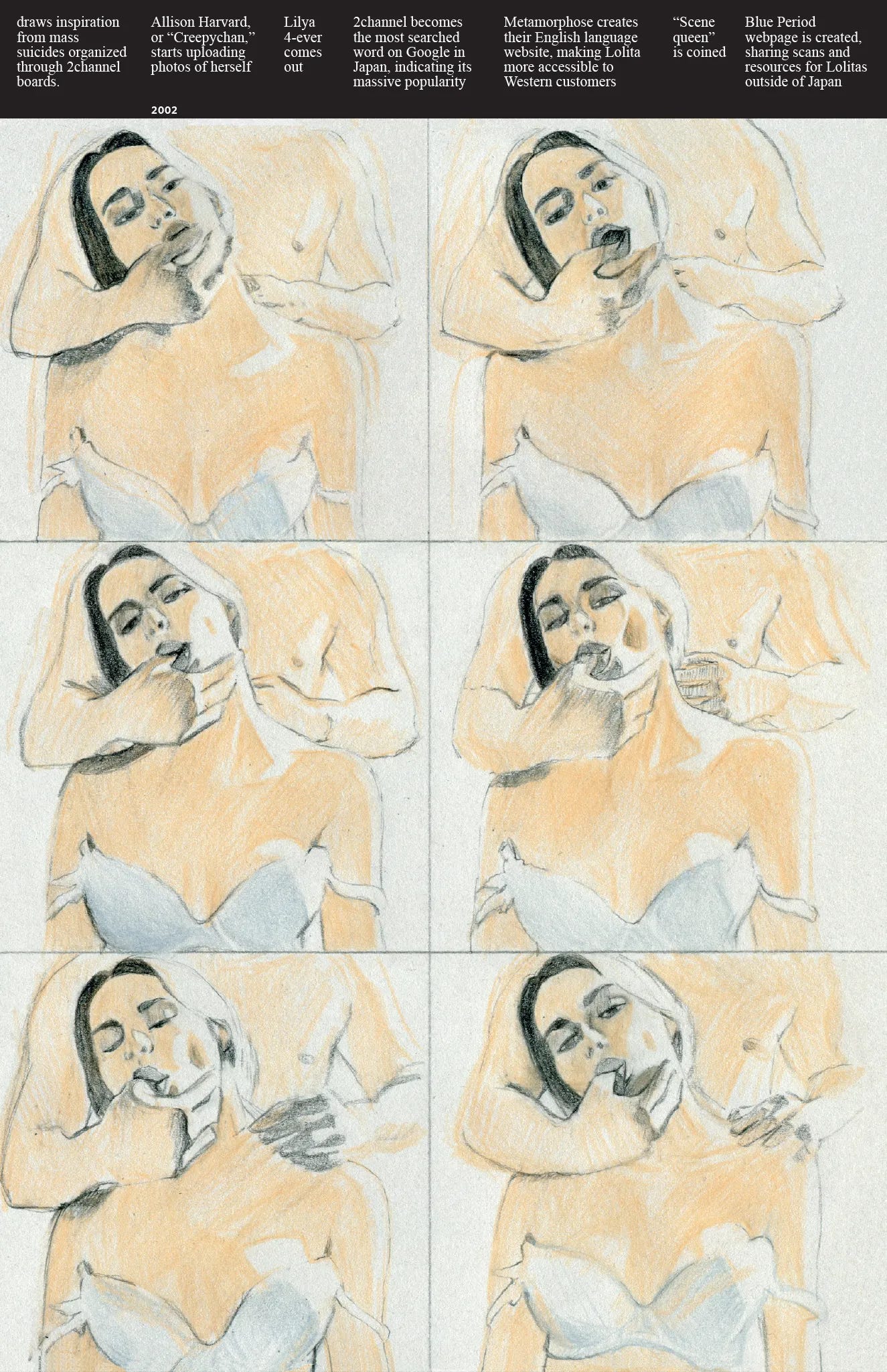An E-girl is much more than a “girl online.” She’s a tastemaker. She exerts a gravitational pull on her orbiters, who circle her, each at their distance.
— E GIRL MAGAZINE VOL. 1
I was sent the first volume of E GIRL magazine by 2dcloud (featuring Katherine Dee et al) and am deeply appreciative of this effort to archive the early to mid-Internet culture of young women. With the ephemeral nature of TikTok and modern meme culture, it is unlikely that a convergence like this of internet subcultures, especially those focused on young women, will happen again.
If you were a teen girl online in the aughts through the 2010s, this zine will feel like discovering an old diary passage from a time when you were tender and maybe a bit dysfunctional.
It’s part historical document, part poetic manifesto. It doesn’t make many claims, but to those who were there, the nostalgia is powerful enough to elicit the vibes the zine was presenting.
In the social web’s history, the mere presence of girls was met with suspicion of being a "guy in real life.” If you made the mistake of disclosing your girlhood you were met with a swift “tits or get the fuck off”. Pornography was rampant across these early spaces, which inadvertently created a contradictory environment where women were simultaneously harassed and pedestalized. This strange dynamic of oscillating between hostility and worship may have unintentionally laid the groundwork for the e-girl phenomenon. As genuine female presence remained scarce in these male-dominated spaces, those women who did navigate these waters became objects of fascination, creating the perfect conditions for the parasocial relationships that would later define e-girl culture.
The magazine's timeline, spanning from 1988 to 2024, constructs a fascinating genealogy of the e-girl phenomenon. Beginning in 1988 with "Minitel Rose" (France's early digital platform for erotic content), the chronology charts the emergence of feminine digital presence through technological milestones and cultural shifts.
What strikes me most about this temporal mapping is how it resists simplistic narratives of "progress." Instead, it presents the evolution of digital femininity as nonlinear, recursive, and often contradictory. Early entries, such as 1989's "videotext dating services" and the 1993 landmark "Mosaic browser girls" (presumably referencing early web personalities), document how feminine performance online predates our contemporary understanding of internet culture.
Later entries track the acceleration through the 2000s and 2010s—from early camgirls to LiveJournal and Gaia Online, to influencer economies, and the TikTok-driven resurgence of the e-girl aesthetic in the late 2010s, culminating in whatever developments 2024 represents.
The assertion that an e-girl "exerts a gravitational pull on her orbiters" elegantly captures the parasocial dynamics of online feminine performance. Here, the e-girl becomes not a passive content, but an ✨active center of gravity✨.
The astronomical language continues with descriptions of different types of e-girl "stars": some "burn like red dwarfs...their subtle light touching only a few admirers," while others "flare briefly and brilliantly as blue giants before burning through their fuel in spectacular collapse."
What resonates with me in this cosmic framing is the acknowledgment of temporality and distance. The magazine notes that "by the time we see their flash, we're only watching an echo," positioning the viewer/follower as an astronomer observing light from long-dead stars. This inversion transforms the typical discourse. It suggests that the power dynamic between performer and audience is more complex than conventional analyses allow.
In its closing words—"a love letter to the twinkling that made us all look up"—it reminds us that critical analysis and genuine appreciation need not be mutually exclusive. Perhaps this synthesis represents the most valuable contribution of E-Girl Magazine. I’m looking forward to VOL. 2! Thank you for sending it to me and trusting me with this review <3 Go and get a copy, everyone!!!






